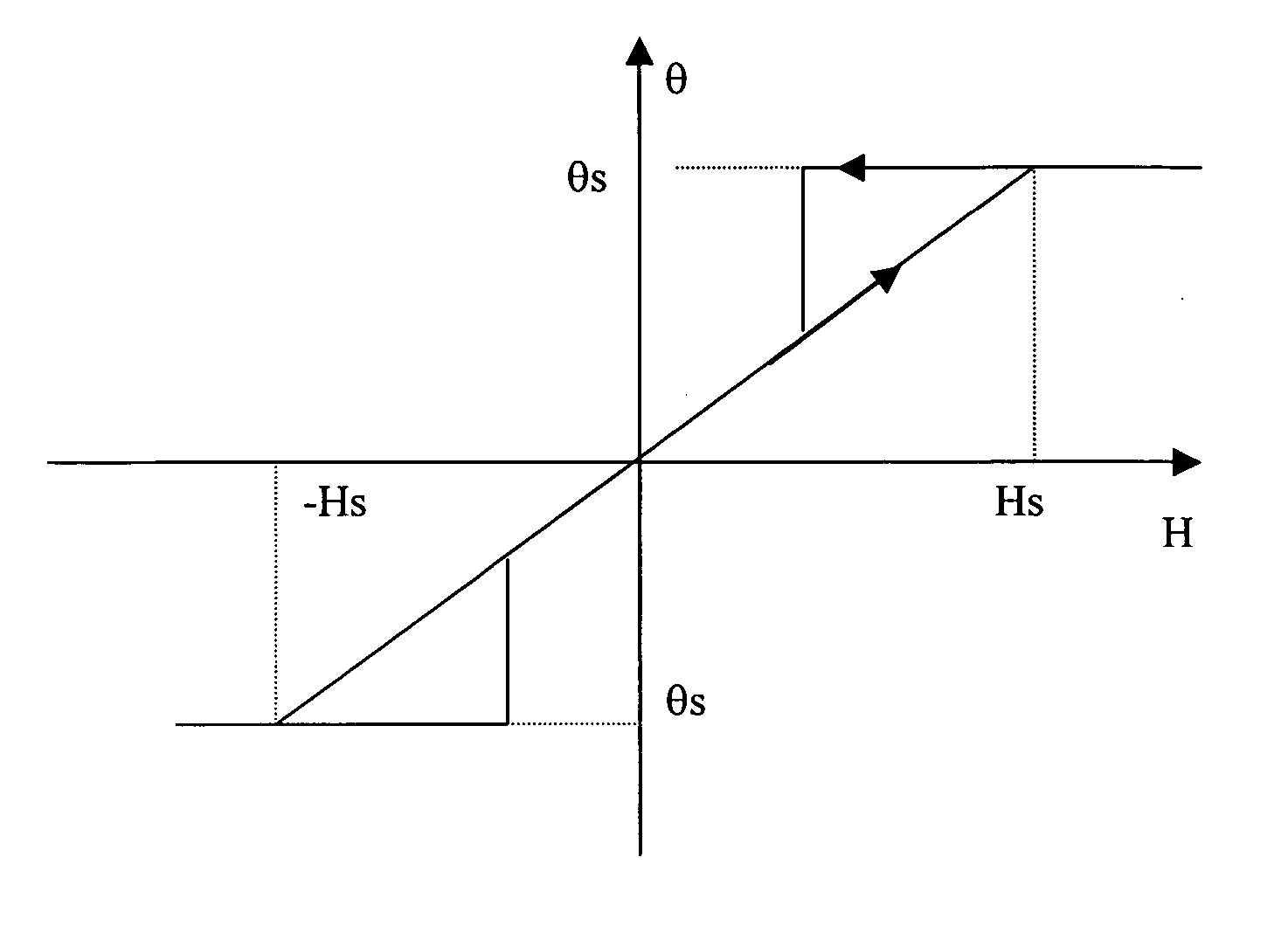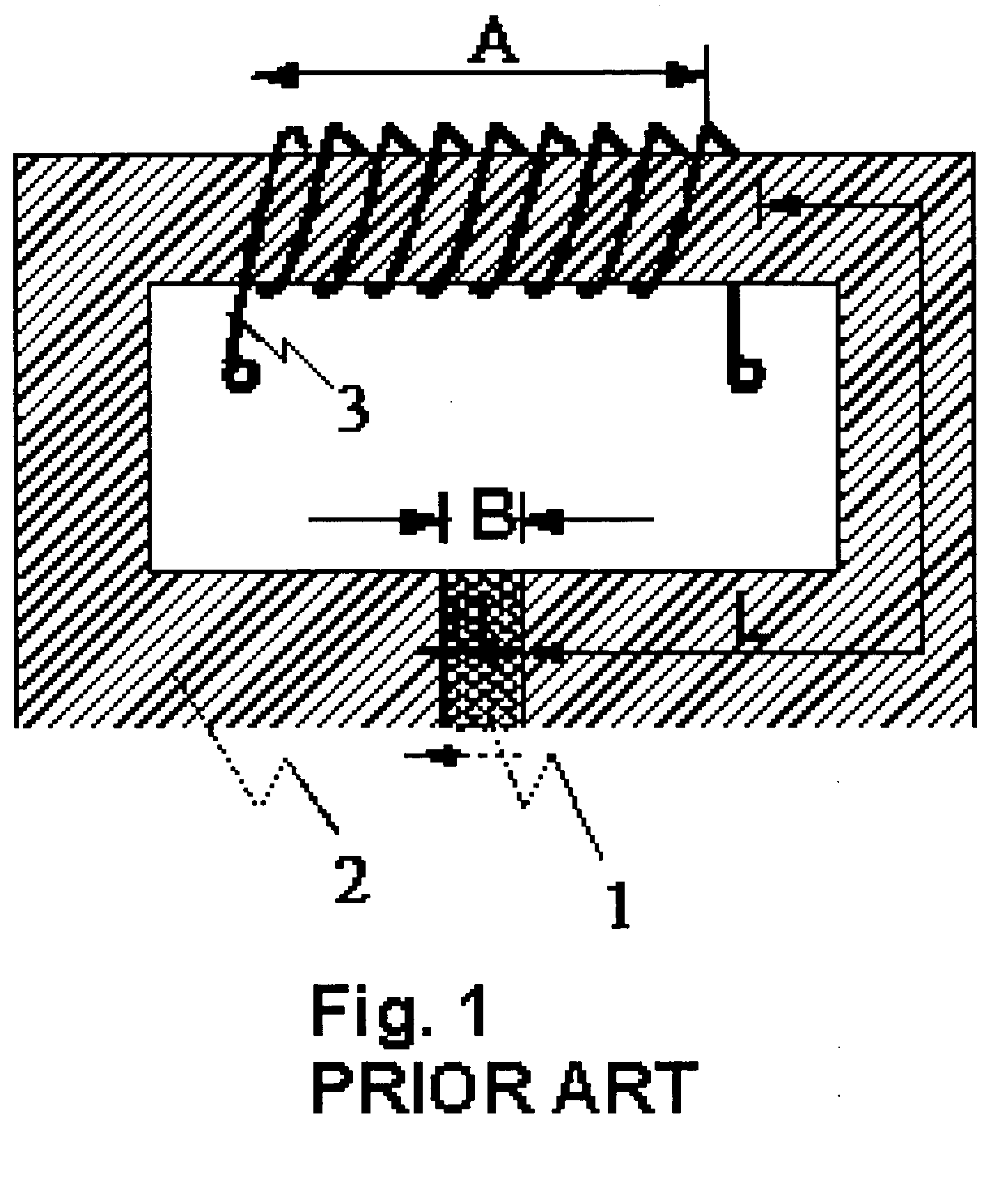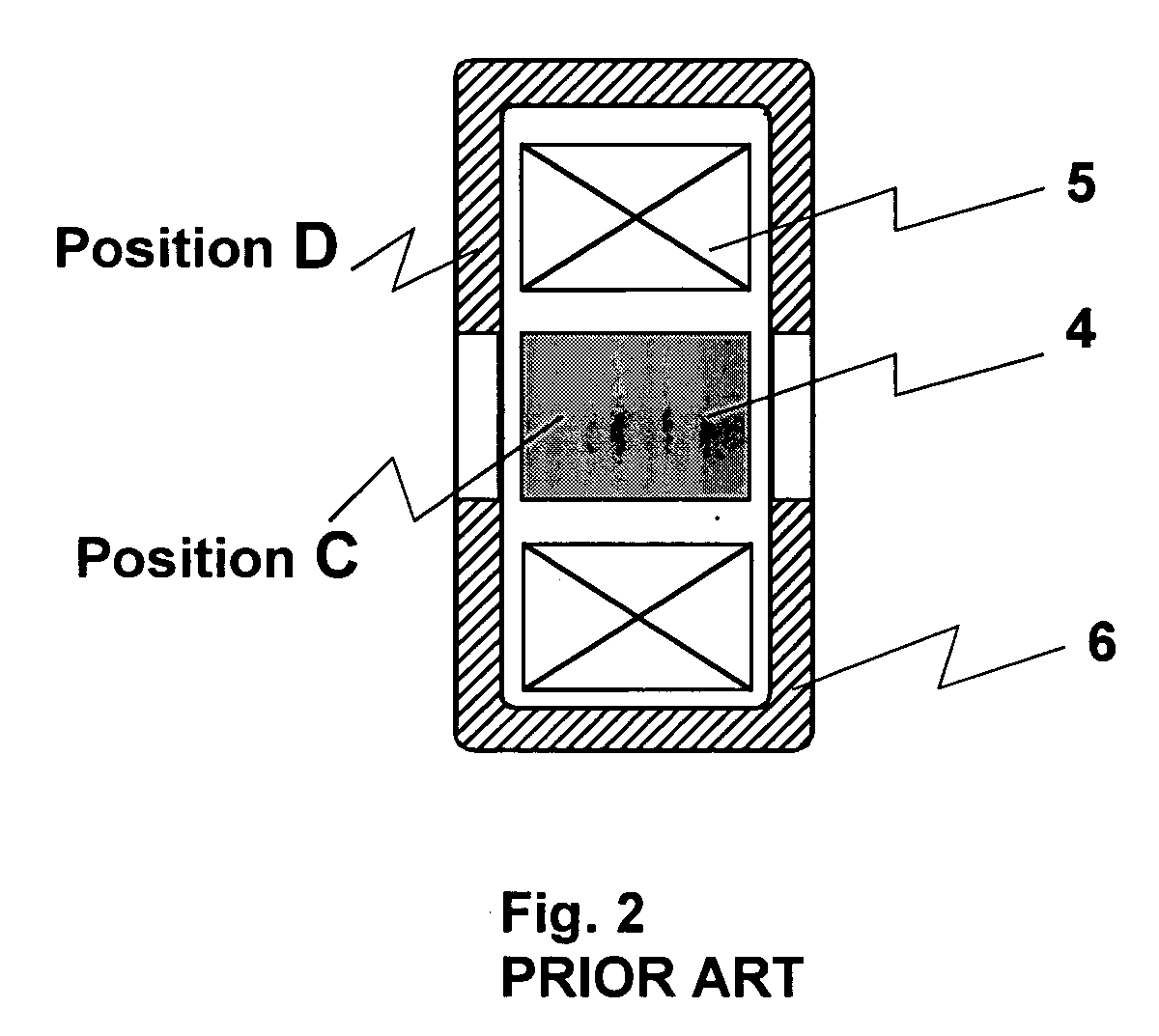Switchable latching-type faraday rotator
a technology of latching and rotators, which is applied in the direction of polarising elements, magnetic bodies, instruments, etc., can solve the problems of inability to control or switch the rotation angle, incomparable reliability, and the prior art switchable faraday rotator cannot meet these requirements
- Summary
- Abstract
- Description
- Claims
- Application Information
AI Technical Summary
Benefits of technology
Problems solved by technology
Method used
Image
Examples
Embodiment Construction
[0041] Magneto-optic material is the core material for the Faraday rotators. FIG. 5 depicts a typical magnetizing and demagnetizing curve of magneto-optic material. H is the external magnetic field which is applied to parallel to the light traveling path. Hs is usually called as “saturation magnetic field” or simply as “saturation point”, where the magneto-optic crystal is saturated.
[0042] To use the magneto-optic crystal in a switchable Faraday rotator, it is necessary to drive the magneto-optic crystal beyond two saturation points, Hs and −Hs. To be a latching type Faraday rotator, it is also necessary to provide sustainable magnetic field which is strong enough to drive the magneto-optic crystal into saturation region and reliably hold the saturation status. The semi-hard magnetic material is an ideal candidate for this application. The semi-hard magnetic material has very low coercive force (Hc5000 Gauss) so that it can produce strong magnetic field in its surrounding region af...
PUM
| Property | Measurement | Unit |
|---|---|---|
| resistance | aaaaa | aaaaa |
| control voltage | aaaaa | aaaaa |
| temperature | aaaaa | aaaaa |
Abstract
Description
Claims
Application Information
 Login to View More
Login to View More - R&D
- Intellectual Property
- Life Sciences
- Materials
- Tech Scout
- Unparalleled Data Quality
- Higher Quality Content
- 60% Fewer Hallucinations
Browse by: Latest US Patents, China's latest patents, Technical Efficacy Thesaurus, Application Domain, Technology Topic, Popular Technical Reports.
© 2025 PatSnap. All rights reserved.Legal|Privacy policy|Modern Slavery Act Transparency Statement|Sitemap|About US| Contact US: help@patsnap.com



